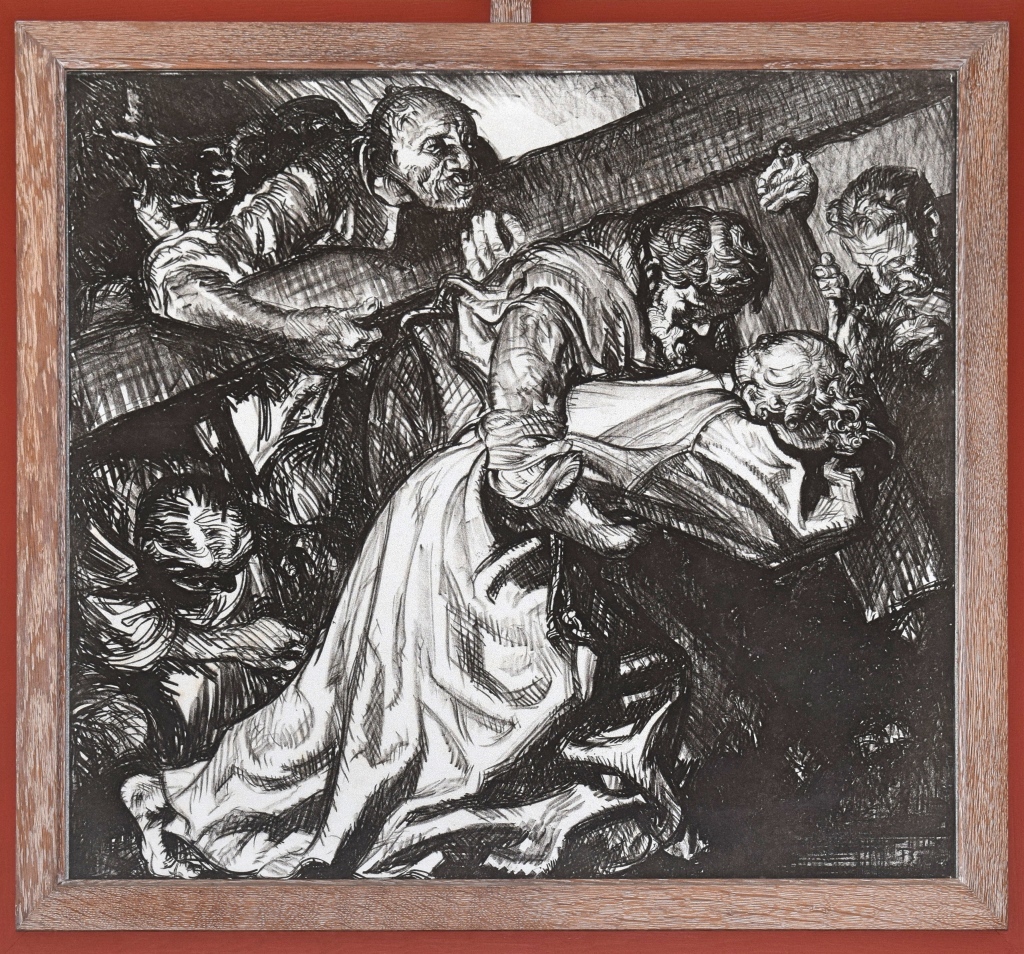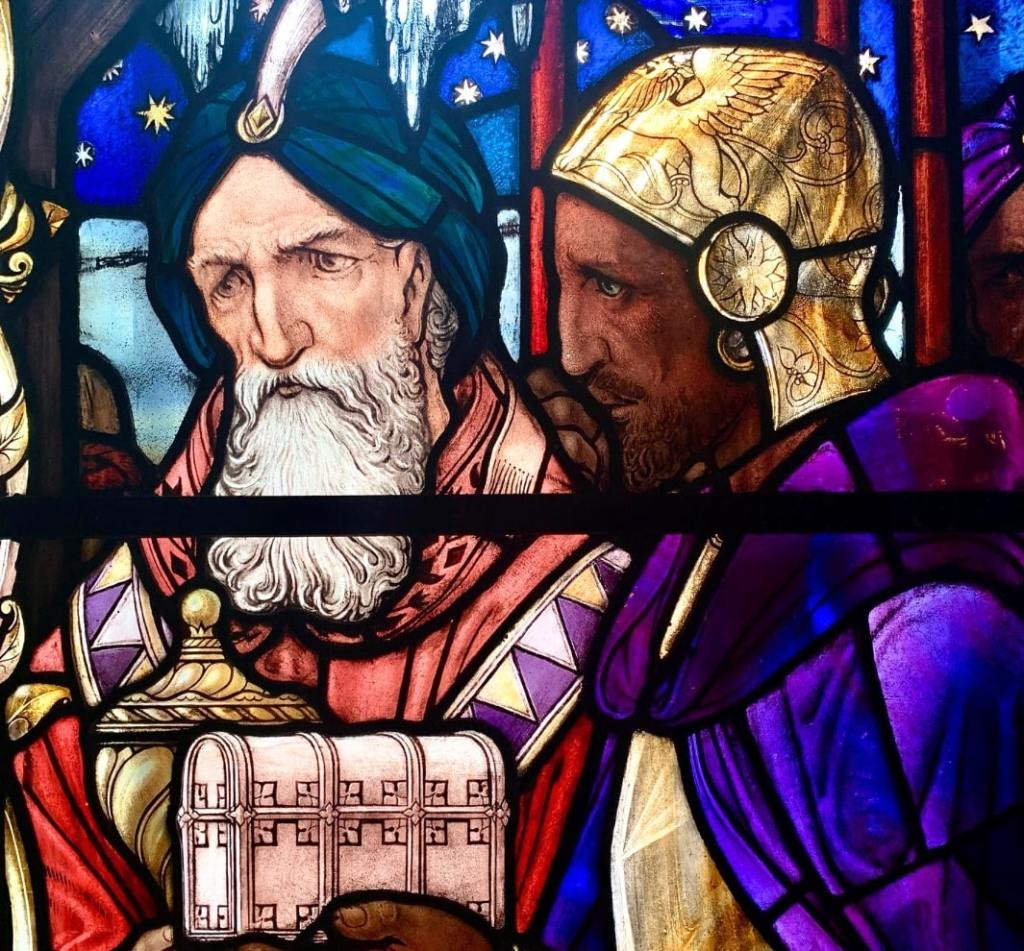The Arts and Crafts movement was a social and artistic approach to design that emerged in Britain in the late 19th century. It aimed to revive the importance of individual craftsmanship and the personal touch in artistic production.
Between the 1840s-1860s, creative thinkers like Thomas Carlyle (1795-1881), John Ruskin (1819-1900) and William Morris (1834-1896) criticised the impact of the Industrial Revolution on art and argued for a return to honest, beautiful, and useful work. For them, true art required personal expression and a commitment to quality, as opposed to mechanisation and mass production.
William Morris went on to become the leading light of the Arts and Crafts movement. In 1861, with others he began a decorative arts company in London (later known as Morris & Co.) that focused on producing handmade home furnishings. Morris had a love of nature, which led to his firm using patterns, colours and details drawn from the natural world.
In 1891, Morris became president of the Arts and Crafts Exhibition Society in London. This body aimed to educate the public about the value of craftsmanship and to promote individual artists. The Society later gave the design movement its name, and its regular exhibitions generated interest in this new approach to art.
Morris and Co. also produced stained glass, which began to be installed in many churches across the country. The Pre-Raphaelite artists Edward Burne-Jones (1833-1898) and Ford Madox-Brown (1821-1893), who were close associates of Morris, were also partners at the firm. They designed many beautiful stained glass windows for Anglican churches and cathedrals. However, examples of their work are rare within Catholic churches in Britain.
Yet, it was a Catholic who was to become the movement’s stained glass pioneer. This was Christopher Whall (1849-1924). Whall was actively involved in the Arts and Crafts Exhibition Society and was a teacher of stained glass production at the Central School of Arts and Crafts in London. He designed and produced glorious windows for churches, chapels and cathedrals across the world.
One of his key principles was that a stained glass artist should be involved in all aspects of production – sketching the original design, making and cutting the glass, painting it, and eventually assembling the window. His philosophy was also that the colours in a stained glass window should be harmonious. Whall encouraged his students to be bold in their choice of colour and to take inspiration from nature.
As a result, Arts and Crafts stained glass differed from the Gothic Revival style that prevailed at the time. The aim was not to mimic the past, but to be original. Following the examples of Morris and Whall, Arts and Crafts glassmakers such as Mary Lowndes (1857-1929), Karl Parsons (1884-1934) and Henry Payne (1868-1940) produced detailed, cohesive windows in a wide range of vivid colours.
In Ireland, the Arts and Crafts movement developed in a Gaelic direction, with workshops such as An Túr Gloine and the Harry Clarke studio producing beautiful stained glass for churches across the country. The Irish Catholic artist Harry Clarke (1889-1931) also made stained glass windows for a handful of Catholic churches and chapels within the UK, such as St Oswald & St Edmund’s (Ashton-in-Makerfield) and the convent chapel in East Grinstead (now part of the Ashdown Park Hotel).
After his death, his wife Margaret Clarke became the director of the firm and the custodian of his legacy. The Harry Clarke studio continued to create stained glass for Catholic churches across the world, including Great Britain. Notable examples include St Charles Borromeo (Newcastle), Sacred Heart (Middlesbrough), St Joseph’s (Colwyn Bay) and Christchurch Priory (Eltham).
Godly glass: English Catholics in the movement

The Arts and Crafts movement is generally considered to have peaked around 1860-1900. It was only later that English Catholics got more involved, having been mentored in its ideals and principles by the first generation of artisans, such as their brother in Christ, Christopher Whall.
Numerous Catholic artists were part of the later wave of the Arts and Crafts movement (i.e. post 1900). Examples of those who produced stained glass include:
- Paul Woodroffe (1875-1954), a pupil of the Arts and Crafts pioneer Christopher Whall. He created stained glass for many Catholic churches including for The Holy Name of Jesus (Manchester), St Mary’s (Uttoxeter) and St Patrick’s Cathedral (New York, USA);
- Sister Margaret Rope (1882-1953), a nun who designed and created stained glass for Catholic places of worship such as Shrewsbury Cathedral, St Mary’s (Lanark), and the Carmelite Monastery (Quidenham). Rope studied under Henry Payne, who himself was taught by Christopher Whall;
- Veronica Whall (1887-1967), the daughter of Christopher Whall, became a stained glass artist in her own right after working in his studio. Within the Catholic context, she created windows for Our Lady of Grace and St Theresa (Chingford) and The Holy Ghost and St Stephen (London);
- Joseph E. Nuttgens (1892-1982), who also studied under Whall and who worked for Woodroffe. Examples of his work include stained glass for the Cathedral of St Barnabas (Nottingham), St Marie’s (Rugby) and St Etheldreda’s (London);
- Moira Forsyth (1905-1991) was a ceramicist and stained glass artist who produced windows for churches across the UK, including for her home church of the Holy Family (Farnham). She also created the giant sanctuary mural of Christ in glory within St Joseph’s (Burslem). Forsyth worked at The Glass House, an influential Arts & Crafts workshop in Fulham;
- Examples of ‘third generation’ artists in the Catholic Arts & Crafts tradition include Gilbert E. Sheedy (assistant to Joseph Edward Nuttgens), John Trinick and Charles Blakeman.
The Community of the Cross: the Guild of St Joseph and St. Dominic

The Guild of St. Joseph and St. Dominic was a Catholic religious community and workshop that was formed in 1921 in the village of Ditchling, Sussex. It was founded by the artist and craftsman Eric Gill, his apprentice Joseph Cribb, the poet Desmond Chute and the printer Hilary Pepler. The guild grew out of – and was inspired by – the Arts and Crafts movement.
Members of the guild practiced a variety of crafts, including printing, sculpture, and metalworking. The artisans were guided by the principles of simplicity, honesty, and hard work. The guild was dissolved in the late 1930s, although the Ditchling Museum of Art and Craft continues to tell its story and showcase some of the art it produced.
Members of the guild were heavily involved in producing Stations of the Cross for new and existing Catholic churches across the country. This included:
- Frank Brangwyn (1867-1956), who had been an apprentice of William Morris, produced Stations of the Cross for Campion Hall (Oxford), St Wilfrid’s (Burgess Hill – above) and the Holy Name of Mary (Middlesbrough);
- The now notorious Eric Gill (1882-1940) designed and sculpted the famous Stations of the Cross for Westminster Cathedral in 1919, as well as a similar series for St Cuthbert’s in Bradford. The cathedral commission opened the door for the Guild to produce stations for many other churches;
- Joseph Cribb (1892-1967), Gill’s apprentice, carved Stations of the Cross for Plymouth Cathedral and for St John’s Seminary in Wonersh (now found within St Mary’s, Woolhampton). He also assisted Gill in the carving of the set within Westminster Cathedral;
- Dame Werburg Welch (1894-1990) was not formally part of the Guild but was a pupil of both Gill and Desmond Chute. She painted Stations of the Cross on wood for the Church of Christ the King (Bromborough) and St Edmund’s (Isle of Dogs, London) as well as designing the set found within Douai Abbey (Woolhampton);
- John Skelton (1923-1999), who was an apprentice of both Gill and Cribb, sculpted a set of Stations for St Edmund’s (Loughton) and St David’s (Tywyn);
- Jonah Jones (1919-2004) was a Welsh sculptor and art teacher who worked mainly with slate. Although not part of the Guild, Jones learned his craft from Eric Gill before opening his own studio in North Wales. Examples of Stations he carved can be found in the chapels of Ampleforth and Ratcliffe Colleges, as well as St Joseph’s (Pwllheli) and St Beuno’s (Trermeirchion).
Examples from Catholic churches in Britain

Here are some examples of Arts and Crafts sculptures, windows and sgraffiti found within Catholic churches across the United Kingdom:
- Moses receives the Law (Heywood Sumner: St Agatha’s, Portsmouth, 1901)
- The Resurrection of Christ (Paul Woodroffe: Sacred Heart Chapel, Roehampton, 1910)
- The Martyrdoms of St Peter and St Paul (Sister Margaret Rope: St Peter & St Paul, Newport, 1914)
- The Visitation (Paul Woodroffe: St Tarcisius’, Camberley, 1923)
- I am the Light of the World (Paul Woodroffe: Our Lady and St Peter, Leatherhead, 1920s)
- The Prophet Isaiah and King David (Sister Margaret Rope: Holy Family and St Michael, Kesgrave, 1927)
- St John the Evangelist (Harry Clarke: St Oswald & St Edmund’s, Ashton-in-Makerfield, 1930)
- St Michael the Archangel (Joseph E. Nuttgens: St Teresa of the Child Jesus, Beaconsfield, 1944)
- St Mary Magdalene follows Christ (Joseph E. Nuttgens: St Marie’s, Rugby, 1946-1948)
- Eleventh Station of the Cross (John Skelton: St Edmund’s, Loughton, 1958)
